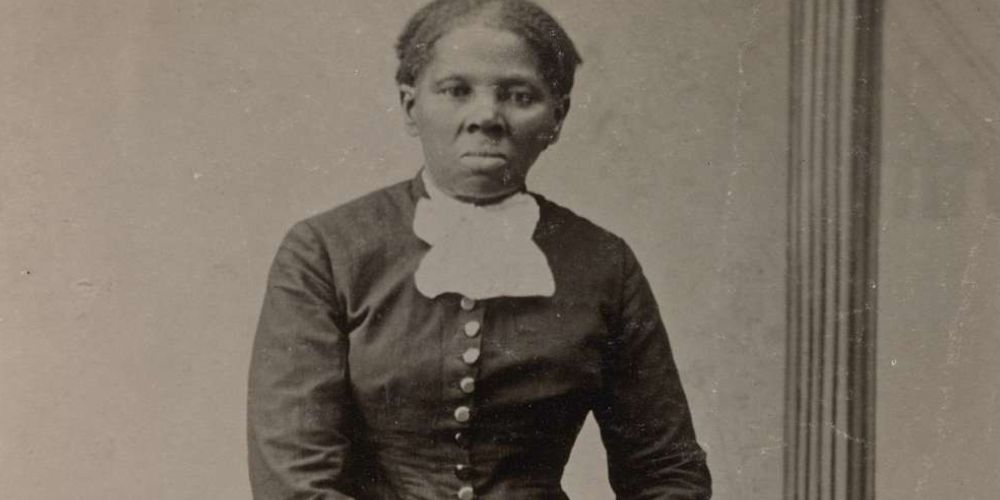Harriet Tubman: Risking Everything To Save Others

Harriet Tubman was an American abolitionist, humanitarian, and political activist who escaped slavery and helped others gain their freedom through the Underground Railroad.
A Brief History Of Harriet Tubman
Harriet was born into slavery on a plantation in Dorchester County, Maryland around 1820. Her parents, Harriet Green (Rit) and Ben Ross were both enslaved and belonged to separate owners who later married. Her mother worked as a cook and her father was a timber worker.
Originally named Araminta Ross, Tubman changed her name to Harriet after escaping from slavery.
As a child, Harriet was rented out to work in other households, where she experienced the brutality of slavery firsthand. She was beaten and whipped and witnessed the mistreatment of other enslaved people. At the age of 12, she stepped between an overseer and another slave, causing her to be struck by a two-pound weight.
Harriet later recalled, “The weight broke my skull … They carried me to the house all bleeding and fainting. I had no bed, no place to lie down on at all, and they laid me on the seat of the loom, and I stayed there all day and the next.”
The impact caused Harriet to experience headaches and narcolepsy for the remainder of her life and made her unattractive to slave buyers and renters. She also experienced hallucinations, which she believed were religious visions.
RELATED: Learn more about local Black History Month events, programming, and initiatives …
Escaping Slavery
In 1840, her father’s owner passed away. In his will, he stipulated that Ben be set free, along with Rit and her children. However, only Ben was freed. Harriet’s new owner refused to recognize the will.
Four years later, Harriet married a free Black man named John Tubman. Following the marriage, Harriet found out that two of her brothers, Ben and Henry, were going to be sold. This knowledge motivated her to plan an escape.
In 1849, Harriet escaped from slavery, with Ben and Henry. But the brothers changed their minds and returned to the Maryland plantation. Harriet persevered, fleeing to freedom in Philadelphia, where she found work as a domestic servant. But this wasn’t enough for Harriet. She wanted to free the people she cared about as well.
Working The Underground Railroad
Harriet became involved in the Underground Railroad, a network of people and safe houses that helped enslaved people escape to freedom in the North. Her first trip via the Railroad was to rescue her niece's family. She also tried to bring her husband north but he had remarried and decided to stay in Maryland with his new wife.
But in 1850 her job as a “conductor” on the Underground Railroad became harder. That is because that same year, the Fugitive Slave Act was released. It allowed escaped slaves in the north to be recaptured and enslaved. As a result, Harriet was forced to lead enslaved people even farther north to Canada. Many of these voyages were made at night throughout the spring and fall when days were shorter.
Over the next decade, Harriet would establish her own Underground Railway network with other abolitionists she befriended. This included Frederick Douglass, Thomas Garrett, and Martha Coffin Wright.
Throughout her life, Harriet made more than a dozen trips to the South to help enslaved people escape. While the exact number of slaves rescued varies, she never lost a single passenger on the Underground Railroad.
Harriet Tubman’s Work During The Civil War
In 1861, the Civil War broke out. Harriet was recruited to work as a nurse, cook, and laundress at Fort Munroe. Here she helped treat sick soldiers and fugitive slaves. During the war, she also worked as a spy for the Union army. She provided intelligence to the Union commanders and she helped liberate enslaved Black people to form the Black Union regiment.
After the war, Harriet settled in Auburn, New York, and married Nelson Davis, a former slave and a veteran of the Civil War. She continued to advocate for the rights of Black people and women. She supported women's suffrage and worked alongside suffragists like Susan B. Anthony. Harriet also established a home for elderly and impoverished Black people, where she lived for the final two years of her life, plagued by her deteriorating health.
Harriet Tubman’s Legacy
Throughout her life, Harriet faced discrimination and opposition due to her race and gender. Many of her remarkable contributions were not recognized until later in life or after her passing. Still, Harriet remained committed to her cause and persevered through these challenges.
Harriet's legacy as a fearless freedom fighter and humanitarian is celebrated today, with numerous schools, museums, and landmarks named in her honor. In 2020, the US Treasury Department announced that Tubman's image would be featured on the new $20 bill, making her the first Black woman to be featured on US currency.
Today, Harriet Tubman's life and work continue to inspire people around the world, and her legacy serves as a reminder of the power of perseverance, courage, and compassion in the face of injustice.
Featured Image – Title: Portrait Of Harriet Tubman. Source: Library Of Congress; image resized and cropped
Beat FOMO by being in the know!
Sign up for our newsletter today and never miss a beat.







